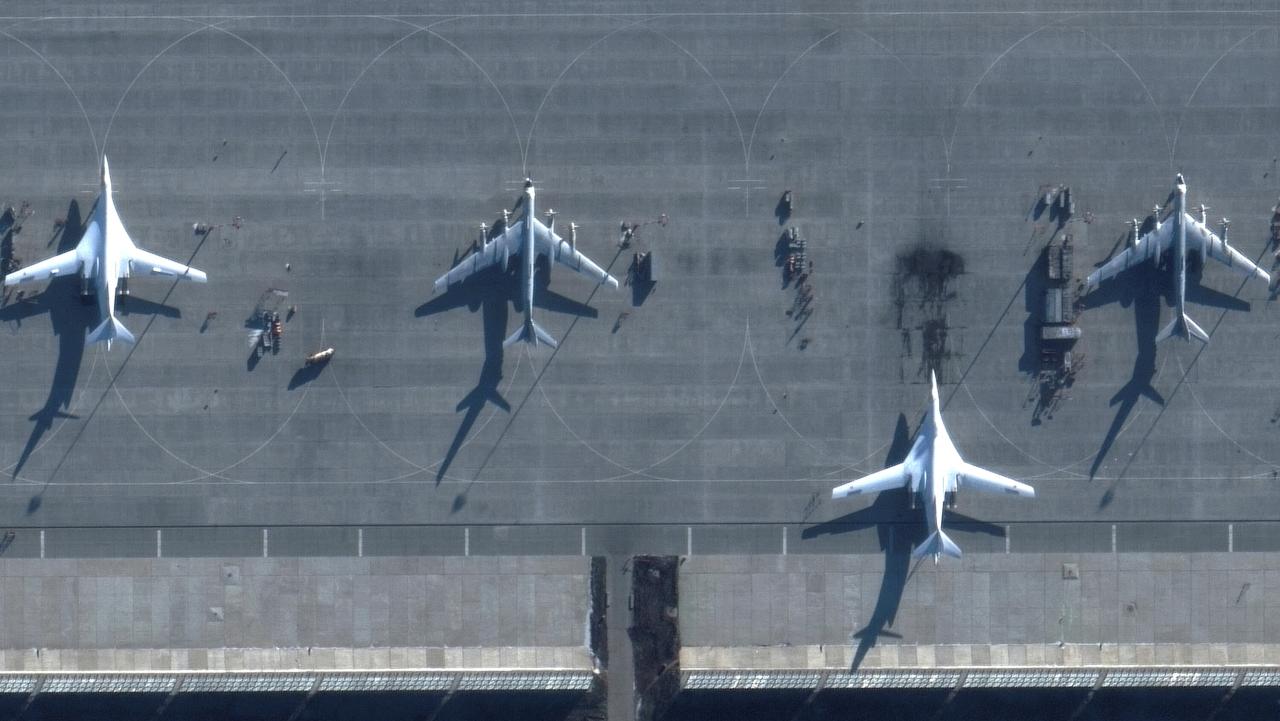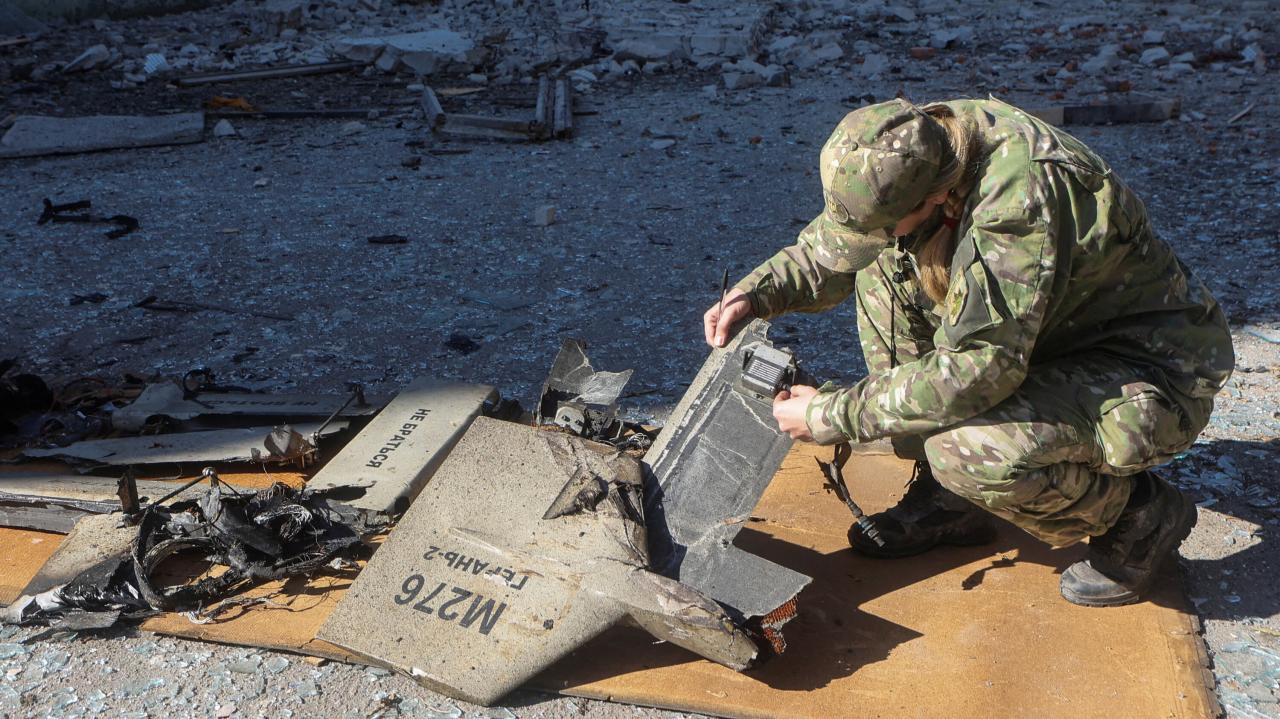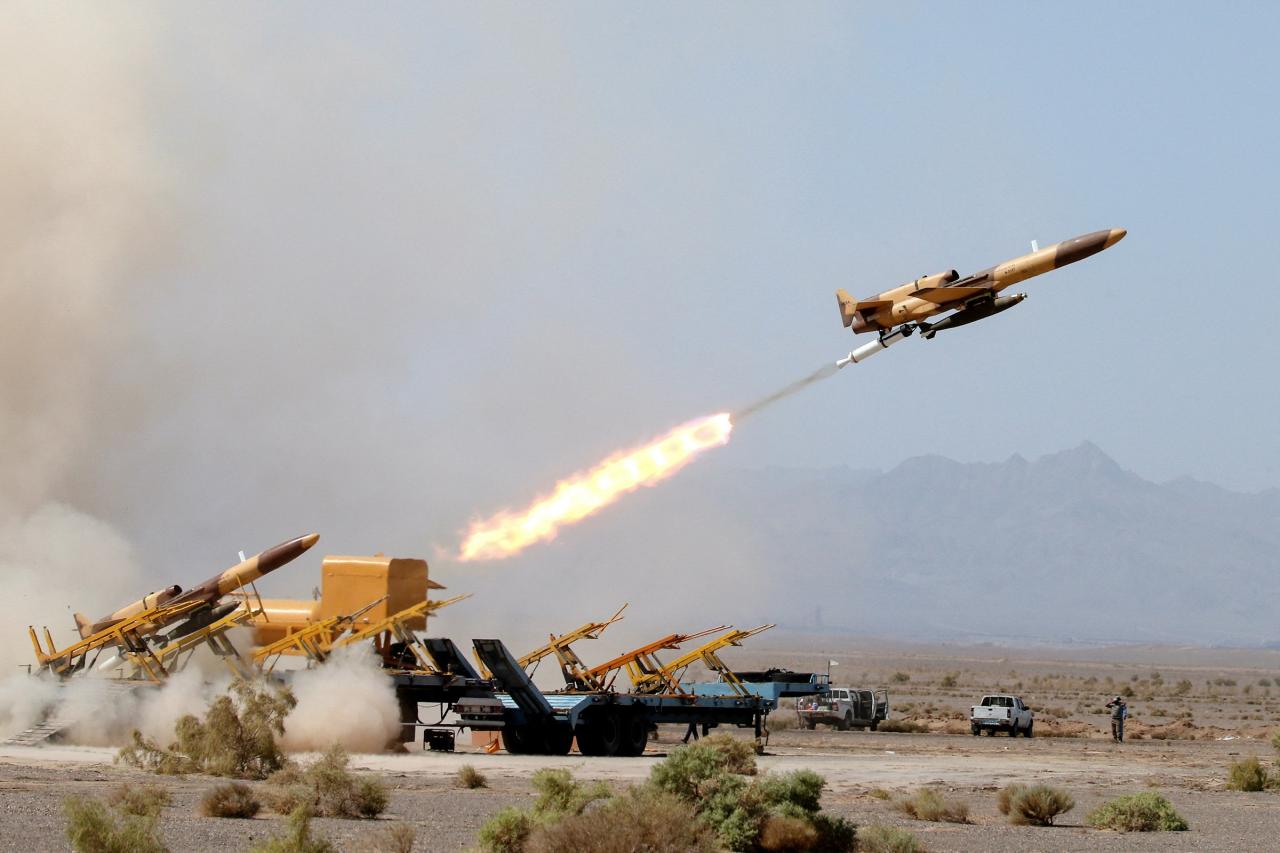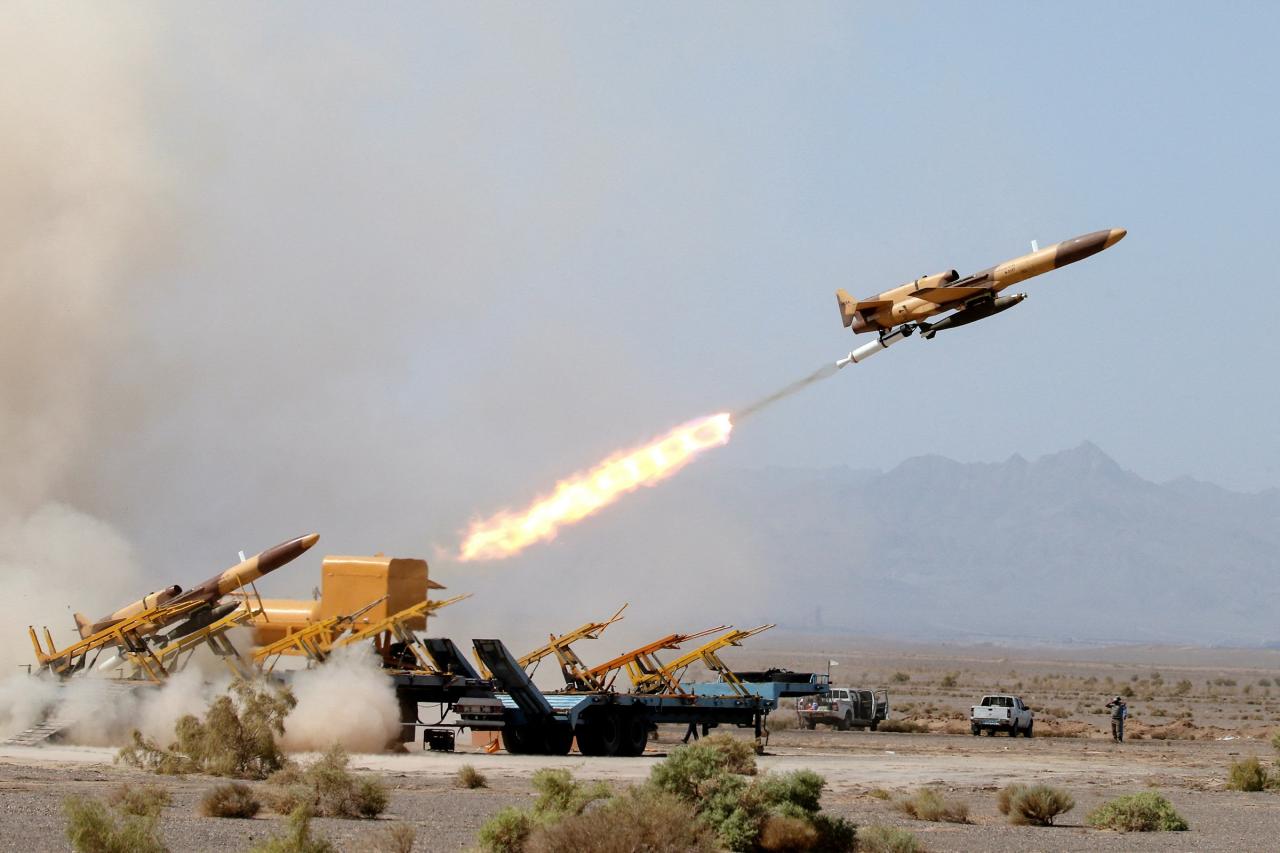Drone attack Russia has become a significant geopolitical event, sparking intense debate and raising critical questions about modern warfare. This exploration delves into the various types of drones employed, their targets, the actors involved, and the escalating international implications. We’ll examine Russia’s countermeasures, analyze the effectiveness of these defenses, and speculate on the future of drone warfare in this volatile context.
Get ready for a detailed look at this rapidly evolving conflict.
From the Ukrainian counteroffensive to potential future escalations, we will cover the technological advancements, strategic implications, and international responses to this increasingly complex situation. We’ll also examine the different types of drones used, their capabilities, and the various actors behind these attacks.
Drone Attacks Against Russia: A Comprehensive Overview: Drone Attack Russia

The increasing frequency of drone attacks against Russia represents a significant shift in the geopolitical landscape. This analysis delves into the various facets of this evolving conflict, examining the types of drones employed, the geographic targets, the actors involved, Russia’s countermeasures, and the broader international implications.
The recent drone attacks on Russia are raising serious questions about the future of warfare. Analyzing the footage often requires powerful computers, so if you’re interested in contributing to open-source intelligence analysis, check out this great resource for building your own rig: pc builder. A powerful PC can help you process the massive amounts of data involved in understanding these complex events.
Ultimately, understanding these attacks relies on access to good technology.
Types of Drones Used in Attacks
A variety of drone models have been used in attacks against Russia, ranging from commercially available off-the-shelf drones modified for military purposes to more sophisticated systems. Their effectiveness varies depending on factors such as range, payload capacity, and stealth capabilities. Technological advancements continually improve drone performance, leading to more frequent and impactful attacks.
- UAVs Based on Commercial Designs: Many attacks utilize modified commercial drones like DJI Mavic and Matrice series, known for their ease of use and availability. These are often equipped with improvised explosive devices (IEDs) with limited payload capacity and range. Their effectiveness is contingent upon surprise and the vulnerability of the target.
- Military-Grade Drones: While less frequently reported, evidence suggests the use of more advanced military-grade drones with longer ranges, greater payload capacity, and enhanced stealth features. These may be supplied by foreign actors or developed domestically. The precise models remain largely undisclosed due to operational security concerns. Their effectiveness lies in their precision and ability to strike more distant, strategically important targets.
- Evolution of Drone Technology: Technological advancements, including improved battery technology, miniaturization of electronics, and the integration of advanced navigation and targeting systems, are continuously enhancing the capabilities of drones used in these attacks. AI-assisted navigation and swarm tactics are emerging trends, promising greater effectiveness and coordination in future attacks.
Geographic Locations and Targets of Drone Attacks
Drone attacks against Russia have targeted various locations across the country. The frequency and location of these attacks provide insight into the strategic objectives of the actors involved. Mapping these attacks reveals patterns and highlights vulnerabilities in Russia’s defenses.
| Date | Latitude | Longitude | Target Type |
|---|---|---|---|
| Example Date 1 | 55.7522° N | 37.6156° E | Military Airbase |
| Example Date 2 | 51.5074° N | 46.0156° E | Oil Refinery |
A visual representation (e.g., a line graph) showing the distribution of attacks over time would illustrate any trends in the frequency and intensity of attacks. For example, a spike in attacks might coincide with significant geopolitical events.
Actors Involved in Drone Attacks
Attributing responsibility for drone attacks against Russia is complex. Multiple actors, including both state and non-state entities, are suspected of involvement. Determining the specific actors behind each attack requires careful analysis of available evidence.
- Ukraine: Ukraine is widely believed to be responsible for a significant number of attacks, particularly those targeting military infrastructure within Russia’s borders.
- Non-State Actors: The involvement of various non-state actors, such as pro-Ukrainian paramilitary groups, cannot be ruled out.
Evidence supporting the involvement of specific actors often includes open-source intelligence, geolocation data, drone wreckage analysis, and intercepted communications. The methods and techniques employed can vary, from simple IED-laden drones to more sophisticated attacks involving coordinated swarms.
Russia’s Response to Drone Attacks

Russia has implemented various countermeasures to mitigate the threat of drone attacks. These measures include both technological and military strategies, but their effectiveness remains a subject of ongoing debate.
- Electronic Warfare Systems: Russia utilizes electronic warfare systems to jam drone signals and disrupt their navigation capabilities.
- Air Defense Systems: While effective against larger drones, Russia’s air defense systems may struggle to intercept smaller, low-flying drones.
- Anti-Drone Weapons: Russia deploys various anti-drone weapons, including directed energy weapons and net-launchers.
The effectiveness of Russia’s countermeasures varies depending on the type of drone used and the sophistication of the attack. While some attacks have been successfully intercepted, others have demonstrated the vulnerability of Russian defenses to this new form of warfare.
Recent drone attacks on Russia highlight the growing use of unmanned aerial vehicles in conflict. If you’re interested in operating drones legally and responsibly, consider getting your drone pilot license in Canada ; proper training and licensing are crucial, even if you’re not planning military operations. Understanding drone regulations is vital, regardless of whether you’re focused on peaceful applications or the increasingly complex geopolitical landscape.
International Implications and Reactions
Drone attacks against Russia have sparked international reactions, with varying levels of condemnation and concern. The impact on international relations and geopolitical stability is significant.
A timeline detailing international statements and actions would highlight the evolving global response. For instance, some countries might condemn the attacks while others remain silent or express more nuanced perspectives.
The Future of Drone Warfare in the Context of Russia, Drone attack russia

The future of drone warfare against Russia is likely to involve increasingly sophisticated drones with enhanced capabilities. The development of autonomous drones and swarm tactics poses a significant challenge to Russia’s defenses.
A hypothetical future scenario might involve a large-scale coordinated drone attack targeting critical infrastructure, causing widespread disruption and potentially escalating the conflict.
Drone attacks on Russia are making headlines, highlighting the increasing use of unmanned aerial vehicles in modern warfare. If you’re interested in the technology itself, though, and not just the conflict, check out some amazing prices on various drones at drone deals – you might be surprised by the variety available. Understanding the tech behind these attacks is easier when you see the capabilities of commercially available drones.
Conclusion

Drone attacks against Russia represent a paradigm shift in modern conflict, blurring lines between traditional warfare and asymmetric conflict. The increasing sophistication of drone technology, coupled with the diverse range of actors employing them, presents a complex and evolving challenge. Understanding the dynamics of these attacks, Russia’s response, and the international ramifications is crucial for comprehending the future of warfare and global security.
The continued development and deployment of drones will undoubtedly shape future conflicts, demanding ongoing analysis and adaptation from all involved.
FAQ Guide
What are the long-term consequences of drone attacks on Russia’s economy?
Long-term economic consequences are difficult to predict but could include damage to infrastructure, disruptions to supply chains, and increased defense spending, potentially impacting overall economic growth.
How does Russia’s geography impact the effectiveness of drone attacks?
Russia’s vast size and varied terrain present challenges for drone operators, affecting range, targeting accuracy, and the overall effectiveness of attacks.
What international laws govern the use of drones in conflict?
International humanitarian law applies, but its specific application to drone warfare is still evolving and subject to debate, particularly concerning issues of proportionality and civilian casualties.
Are there any international efforts to regulate the use of drones?
Several international organizations and treaties address aspects of drone use, but a comprehensive, universally accepted regulatory framework remains elusive.
